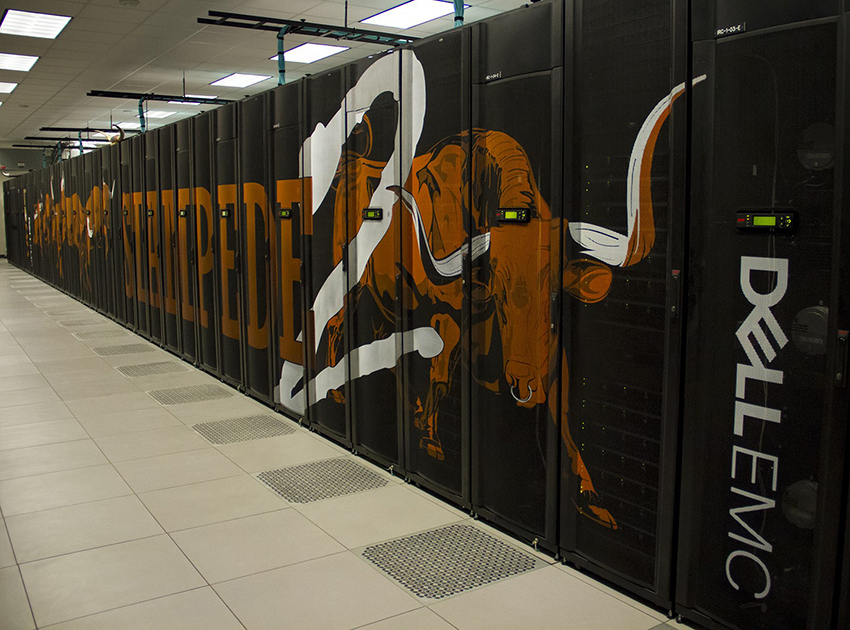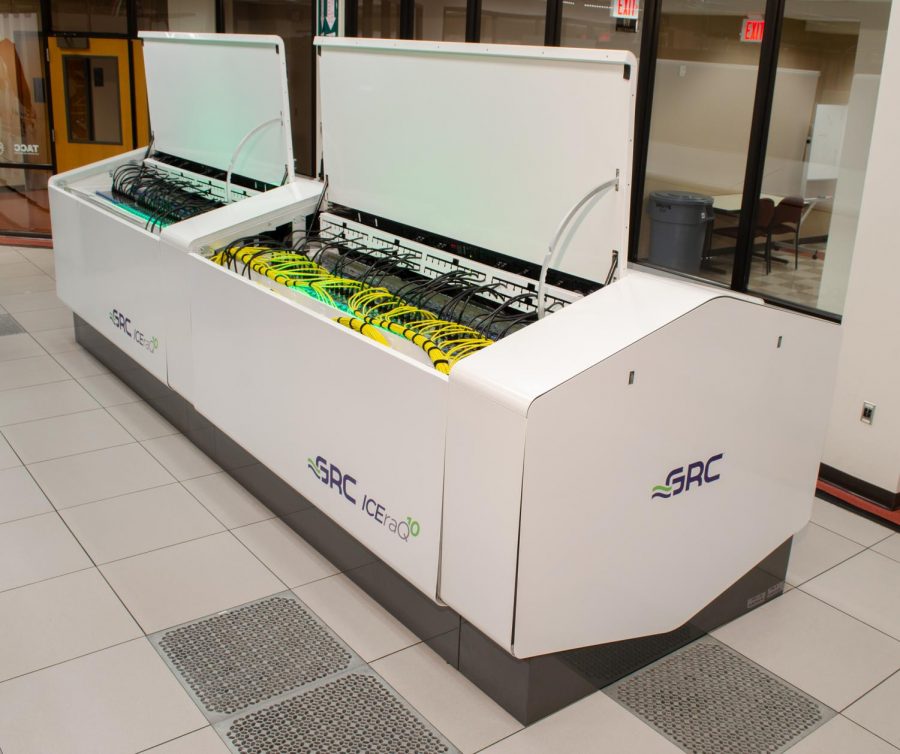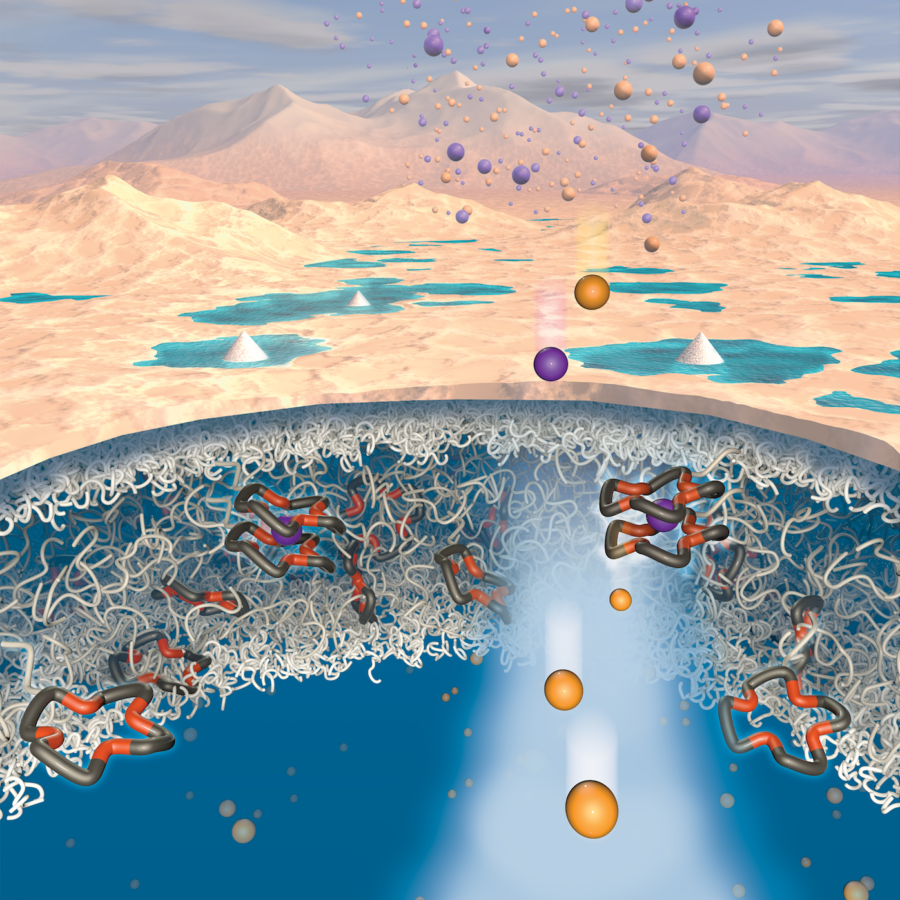Everything is bigger in Texas, and our computers are no exception.
In 2011, UT won a competition held by the National Science Foundation to develop and house the first Stampede supercomputer. It was such a success that the NSF decided to award UT Stampede2, a second supercomputer, without holding a competition, TACC representative Doug James said.
Stampede2, which is the Texas Advanced Computing Center’s flagship supercomputer, is currently the world’s 12th most powerful supercomputer and the most powerful supercomputer at any U.S. university.
“At its most basic, a supercomputer is any computer that performs at the very high end of what’s possible,” James said. “It’s a machine that pushes the limits of technology … designed to help answer the biggest, most complex problems facing researchers.”
Supercomputers can be used to study almost anything, from the origins of the universe to subjects even in the social sciences, arts and humanities.
Stampede2 is not just a single computer. It’s actually a sophisticated network of 3,936 smaller computers communicating and collaborating with each other, James said. Each of these smaller computers has 48 to 68 independent processing cores with 112-196 Gigabytes of memory each, he added, compared to your typical desktop, laptop or phone’s two cores.
This means that Stampede2 has between 188,928 and 267,648 cores and can process 100 GB per second’s worth of information.
This is no easy feat. This sort of power requires a program that allows these cores to communicate, and writing this program is the hardest part, according to James.
“Imagine a jigsaw puzzle the size of a football field,” James said. “You and a few thousand of your closest friends each have a bowlful of puzzle pieces. Think about the coordination required to pull off the challenge.”
In addition to being a national resource used by more than 13,000 researchers around the country, Stampede2 is also the flagship resource for the Extreme Science and Engineering Discovery Program, XSEDE, an NSF-funded organization that provides computing resources to researchers, James said.
Chris Fragile, a professor in the Physics and Astronomy Department at the College of Charleston, is one of these researchers.
“I wouldn’t be able to do what I do without machines like Stampede2,” Fragile said. “Some of the astrophysical computer simulations that I run require millions of computing hours to complete. On a desktop computer, that would literally take more than 100 years. But on a machine like Stampede2, where I can use thousands of computers simultaneously, the same simulation only takes a few weeks.”
Fragile used Stampede2 to help develop CosmosDG, which is a computational astrophysics code that allows for simulations of astrophysical phenomena, such as black holes.
In addition, Stampede2’s architecture was so new and had so many processing cores that Fragile actually had to modify how CosmosDG was written to take full advantage of Stampede2’s abilities.
“It was a challenge for our code,” Fragile said.
But perhaps the most interesting thing about Stampede2 isn’t its power, but the fact that it’s uniquely UT.
“(We) wired every inch of the network and wrote much of the software that makes Stampede2 tick,” James said. “We maintain and support it. We answer every trouble ticket, and we teach classes and workshops on supercomputing. We collaborate with those who use the system. We own it. It’s got the UT brand all over it.”
Stampede2’s importance doesn’t just lie in its processing power. Instead, it’s already leaving a lasting legacy.
“We’ve proven that we are the folks you want designing, deploying, maintaining and supporting your biggest systems,” James said. “It means that UT rocks!”





















